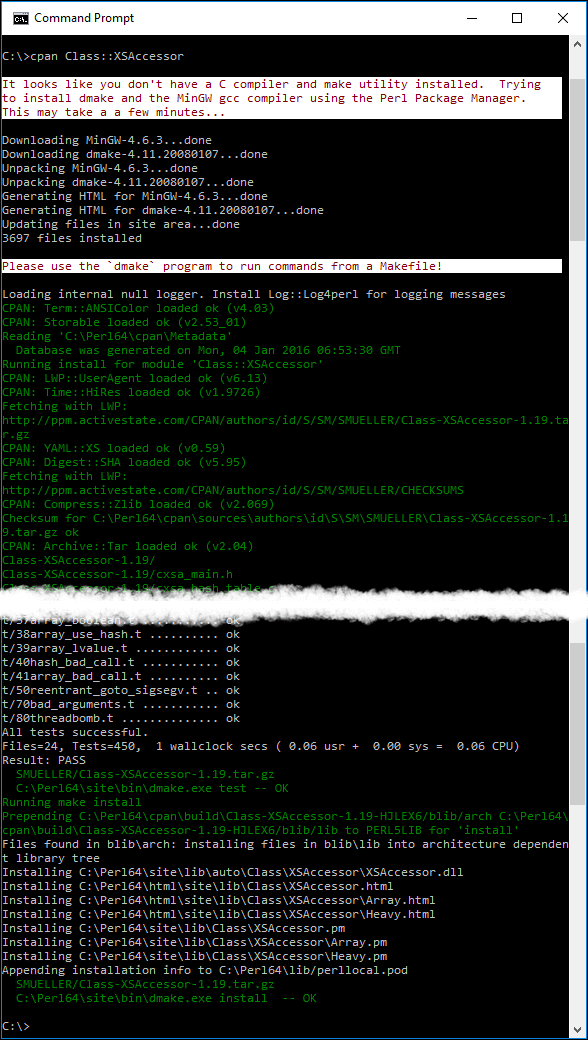

The ActivePerl for Windows can be uninstalled using the Modify, Repair or Uninstall ActivePerl shortcut in the ActiveState ActivePerl 2.7 program group in the Windows Start menu, or you can use Add/Remove Programs in the Control Panel.Īlternatively, you use the setup wizard (.exe) file to uninstall ActivePerl on the command line and write the progress to a log file: c:\> ActivePerl-.exe /x // /L*v. c:\> ActivePerl-.exe /qn+ APPDIR="C:\apps\Perl" ^įor more information about the command line installation options, contact Uninstalling ActivePerl
ACTIVEPERL EXE INSTALL
For example, the following command will install just the ActivePerl core and documentation to C:\apps\Perl. You can combine command line options to complete your custom installation from the command line. You can also specify a custom installation directory instead of using the default. Specifying a custom installation directory The following command will generate a log of the install in “install.log” in the current directory. If you want to enable logging you can add the appropriate command line switches to specify the level of logging and the log file location. You can start the Setup Wizard from the command line, and walk through the installation steps in the user interface. ActivePerl’s installer uses Windows Installer technology, which allows you to partially control the install from the command line. You should start the command prompt as an Administrator to ensure the the installation can complete successfully. You can install ActivePerl from the command line. Running the ActivePerl Setup Wizard on the command line Running the installation as an Administrator allows other users on the computer to use ActivePerl, and ensures that all of ActivePerl’s features function correctly.
ACTIVEPERL EXE .EXE
exe file and select Run As Administrator. Note: If you do not have Administrator rights on the computer, you can use the generic ActiveState Package Installer to complete the installation. When you install ActivePerl, you should run the setup wizard as an Administrator.

The PerlScript feature will be unavailable.PerlScript file associations are not created.Environment variables are set only for the current user.
ACTIVEPERL EXE FULL
If you install ActivePerl without full administrator privileges, the Administrative Privileges: ActivePerl installations must be performed by a privileged user.May get an error message to this effect, or it may fail mysteriously. If you do, the Windows Installer Service will notīe able to access the EXE file in order to perform the installation. Installation package from a directory for which the “System” account does System Account: (EXE Installer only) Do not launch the.Perl modules to be used during the installation process. Otherwise, these variables may cause incompatible versions of Have been set on your system, you should unset them before installingĪctivePerl. Perl Environment Variables: if Perl environment variables.PerlScript requires an ActiveX scripting host such as Internet Explorer or Windows Scripting Host.Perl for ISAPI requires an ISAPI-compatible web server, such as IIS.The installation requires at least 200 MB of hard drive space.Before you beginīefore you start the installation, you need to ensure that your system meets the prerequisites, and that you do not have other Perl distributions that are going to conflict with ActivePerl. For more complex installations you can run the Setup Wizard on the command line. You can install ActivePerl by downloading and running the Setup Wizard (.exe).


 0 kommentar(er)
0 kommentar(er)
